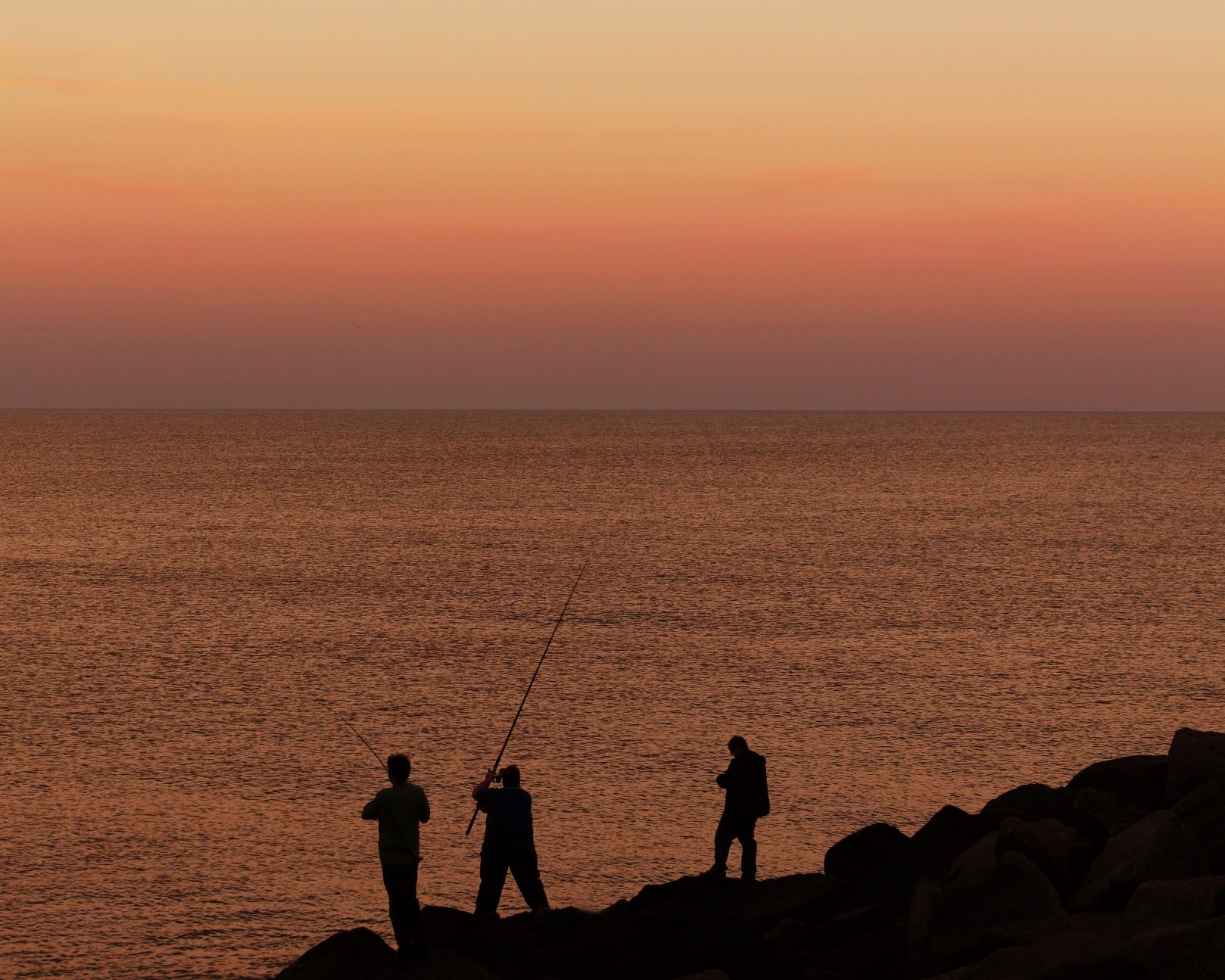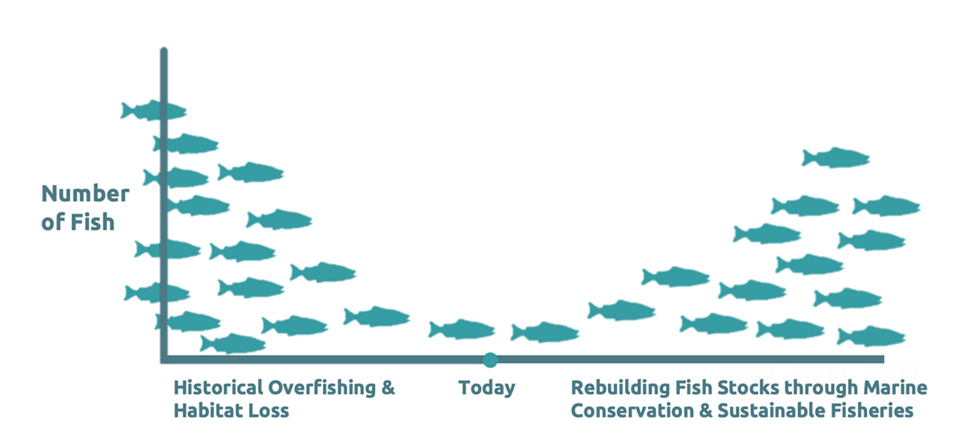
The world has been seeing some alarming trends in food and nutrition security, and Canada is no exception. According to recent poll data from Food Banks Canada, one-in-five Canadians (approximately 7 million people) reported going hungry at least once between March 2020 and March 2022, with lower-income Canadians hit the hardest by inflation. Additionally, 23% reported that they are purposely eating less than they should because there isn't enough money for food. This number was two times higher (46%) for Indigenous households.
The ocean plays a vital, yet not widely recognized, role in global food systems. Stronger ocean protection is urgently needed to halt and reverse declines in marine species that support the health, culture, economy, and well-being of coastal communities in British Columbia, according to new research by the Central Coast Indigenous Resource Alliance (CCIRA) and member First Nations the Haíłzaqv, Kitasoo Xai'xais, Nuxalk and Wuikinuxv. Marine protected areas (MPAs) are a key tool in achieving the protections these species need.
While the CCIRA study focuses on the impacts of species declines on Indigenous communities on the Central Coast of BC, it provides a strong case for how these declines concern all residents of BC – Indigenous and non-Indigenous. Among the issues presented are losses in food and nutrition security due to declines in foundational species such as salmon, herring, rockfish,
The Northern Shelf Bioregion Marine Protected Area Network
Protecting the health of marine environments is key to ensuring oceans continue to provide food and other benefits for communities. One of the best ways to protect, restore and enhance ocean health is through the establishment of well-connected networks of MPAs that protect a wide range of biodiversity and ocean functions. This is the approach being taken in BC to establish Canada’s first-ever MPA network.
For over a decade, the Haíłzaqv, Kitasoo Xai'xais, Nuxalk and Wuikinuxv Nations have been working with 13 other First Nations, along with the governments of BC and Canada, to develop an MPA network for the Northern Shelf Bioregion, spanning from northern Vancouver Island to Alaska, a region also known as the Great Bear Sea. Once implemented, the MPA network will bring many benefits for both nature and people. This blog presents some of the anticipated benefits related to food and nutrition security.
Source: CCIRA 2022
Food from the sea
Fish and other seafood products provide sustenance to billions of people worldwide – 3 billion of whom rely on seafood as their primary source of protein. Food from the ocean is also highly nutritious, containing vital micronutrients, which are not readily found in land-based foods: omega-3 fatty acids, vitamins (D, A and B) and minerals (calcium, zinc, iron and iodine).
Along with food, the ocean supports fisheries, which are integral to global food security, nutrition and economic well-being. Supplying an income for 10 to 12% of the global population, fisheries promote household food security by providing a means to purchase other food products. In Canada, commercial fisheries are the backbone of many local economies, providing jobs for many people from coast to coast to coast. For Indigenous people, fishing has always been a source of food and trade, and an integral part of community health, cultural identity, and way of life.
While the ocean is integral to global food and nutrition security, its ability to continue to provide for humanity is hindered by human exploitation and harmful activities. Overharvesting, destructive practices and poor management of fish stocks are driving many fisheries into decline or even collapse, including many of those in BC (e.g., half of Pacific Salmon populations are in some state of decline) and other parts of Canada. Adding to this, climate change is altering the productivity of fish species and habitats, thus amplifying existing stressors on marine environments and the seafood industry.
Failing to address declines in fish stocks will jeopardize the health and livelihoods of those reliant on fishing for food and income. Health risks include higher rates of malnutrition and greater vulnerability to physical and mental health problems. Economic and food security losses from stock declines are already a major issue for many First Nations. Of particular concern are declines of foundation species like salmon, herring, rockfish, and eulachon, which play a critical role as traditional food sources and in ceremonial, cultural and social events.
MPAs can promote food security at a regional and household level
MPAs are areas of the ocean that provide protection from threats of human activities, which can include limiting destructive fishing practices and overharvesting. Studies across the globe have shown time and time again that MPAs are highly effective tools for nature conservation. Governments are also increasingly employing MPAs as fisheries management tools to protect, restore and replenish exploited fish stocks, as well as threatened species and habitats.
Like protected areas on land, MPAs limit some or all human activities to maintain or improve the health of entire ecosystems, recognizing the important connections between habitats and the living organisms that live there, from fish to whales to people. This is in stark contrast to conventional fisheries management that has been employed across Canada to maximize fisheries yield for individual commercial species – an approach that has contributed to the declines of multiple fish populations (see CCIRA’s article for more information).
Networks of MPAs are made up of individual MPAs that are strategically linked to offer more complete protection than any one site on its own. Networks are not just about protecting a wide diversity of habitats and species; they can also bring many benefits that help people, including providing us with marine-based foods.
Recovery of fish stocks
MPAs can deliver long-term benefits for fisheries, and food security in general, by helping to rebuild and sustain abundant fish stocks. Within their borders, MPAs provide a refuge for fish to grow larger and produce more offspring, giving exploited populations time and space to return to healthy levels. A global synthesis of 124 fully-protected MPAs found that fish, invertebrates and seaweed combined had, on average, 4.5 times more biomass, 28% larger body size, and 21% higher species diversity within MPAs than in other areas.
As numbers of fish in MPAs multiply, some juveniles and adult fish can spill over into neighbouring waters where fisheries can reap the rewards. This in turn can help in the recovery of depleted fish stocks, supporting more sustainable fisheries in the long-term. Genetic studies in New Zealand, Australia, and California all found evidence of the spill over effect whereby fish reproduction within MPAs replenishes fish stocks in adjacent fishing areas.
Partially-protected sites that reduce fishing pressures can serve to protect culturally significant food sources, while still maintaining access to locally harvested sea products (see this example of the protection of Dungeness crab for Indigenous food, social and ceremonial purposes). In cases where fishing areas are lost from spatial closures of MPAs, the long-term benefits for fisheries can significantly outweigh the initial costs. In California, for example, a 35% reduction in fishing area following MPA designation was more than compensated for by a 225% increase in total catch of spiny lobster after a period of only 6 years.

Source: CCIRA 2022
Stable jobs and new economic opportunities
MPAs act to safeguard the natural resources on which many marine-based sectors depend. Along with helping to sustain jobs in the fisheries sector, properly-managed MPAs can greatly benefit nature-based tourism. Good, stable jobs in MPA planning, management, and monitoring can also be created. By supporting livelihoods and creating new economic opportunities, MPAs can help to stabilize and diversify household income, which often benefits household food security as well.
The ability to boost local economies is illustrated in changes to commercial fishery revenues following the implementation of California’s MPA network. When MPAs were established in 2007 in the California Central Coast, the combined value of commercial landings for the ports of Morro Bay and Monterey was US$10.6 million (CAN$13.6 million); 10 years later, that value had more than doubled to US$22.1 million (CAN$ 28.4 million).
Protecting biodiversity in the face of climate change
MPAs have been shown to support greater biodiversity (e.g., fully protected MPAs increase levels of biodiversity by an average of 23%), which helps to maintain ecosystem functioning, health and productivity. Protecting biodiversity enhances the ability of ecosystems to withstand a stress event and recover more quickly, making species and habitats more resilient to ocean warming and other stressors attributed to climate change.
For instance, a study in Baja California showed MPAs enhanced resilience and helped abalone populations recover more quickly from climate-driven hypoxia (a lack of oxygen in marine environments). Similar results were reported in an Australian study, where MPAs helped coastal ecosystems cope with extreme weather events.
In addition to benefits for climate change adaptation, MPAs can help mitigate climate change by acting as a blue carbon solution. Blue carbon refers to the capacity of marine life to sequester CO2 from the atmosphere. Marine ecosystems, especially coastal habitats like salt marshes, seagrass beds, and mangroves, are increasingly recognized for their important role in mitigating climate change through carbon sequestration.
Using MPAs to preserve, restore and expand these ecosystems can help fight climate change by ensuring that blue carbon habitats continue to remove and store significant amounts of carbon. Protecting coastal habitats such as wetlands and reefs as part of an MPA can also help to protect coastal communities from extreme storms, flooding, and erosion.
The future of ocean management and its potential for food security
The oceans – and the subsistence they provide for humanity – face many
Harnessing the potential of our oceans to provide food for the future cannot be achieved without stronger marine protection. We need to maintain and enhance ocean health to secure jobs, food and nutrition for everyone, and MPAs are a key tool in helping us do so.
Top photo credit: Anthony via Pexels
This is the 6th blog in a series about the benefits of marine protected areas.
Part 1: Climate change was front and centre this summer: let’s focus on ocean protection this fall
Part 2: Will big marine protection commitments at COP26 inspire Canada?
Part 3: Marine protected areas are an “insurance policy” in turbulent times
Part 4: Marine protected areas are central to our blue economy
Part 5: How protecting the ocean helps humans in return
Part 6: How better ocean management can promote food security
